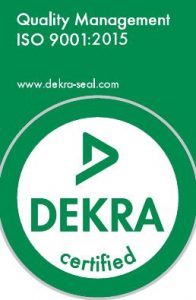Image you’ve just placed an order for two million injection molded parts to be manufactured over the course of a year and each part needs to be exactly the same. Or, that you have a part with a tolerance of under 0.001”.
How confident are you that the manufacturer you’ve placed the order with can hit your specifications?
At Performance Plastics, we couple our design expertise with automation and robotics to ensure tight tolerance part quality and consistency, as well as cost effectiveness.
“Everything starts with the molding process and we’re among the best for getting that process tight,” says Jake Edwards, an automation engineer at Performance Plastics. “After molding, we’re constantly verifying that we’re within specifications. Automation allows us to efficiently inspect 100 percent of the products we make if needed.”
Keeping It Tight
For high-volume runs, we make sure every part that goes out the door is within the customer’s spec or our own – whichever is tighter. We measure dimensional tolerance, surface tolerance, even the way parts are positioned so they can go into the end product the same way every time.
“We have parts that we make where we have to hold the tolerance to under 0.001 of an inch,” Edwards says. “And that can be over a run of 15 million parts throughout the year. We have to have a flat line of consistency.”
But it’s not just high-volume orders that are checked via automation. Low volume runs with very tight tolerances for parts in critical applications are handled this way too. For example:
- In the HVAC industry, we make parts that seal off chemicals in order to prevent dangerous leaks.
- In the Industrial space, we make parts for plasma cutters that make sure two different types of gases are mixed correctly right at the nozzle.
- In the Medical industry, we make parts that contain tissue samples. They need to be protected from contaminants to guard against false positives or negatives.
Robotics and Automation
At Performance Plastics, we use a combination of automation and robotics across everything we do.
“Robotics is automation,” says Edwards, “But automation is not necessarily robotics.”
As previously described, automation is used to test tolerances. But we also have hard automation where cylinders, vacuums, and other actuators are moving product from place to place around the production facility – all with no robot in sight.
However, robotics does make automation simpler. Take overmolding, for example. Many parts include battery contacts that run internally, a metal base, or features made from something other than plastics. A robot is can be fed these parts by an operator or other means. The robot will then place the parts in the mold to have the plastic part molded over top of the inserted non-plastic piece, pull the completed part out and re-insert new, quickly and reliably.
Cost Savings
Where automation and robotics comes together is at the bottom line – cost savings. For example, cycle times can be greatly improved because automation allows us to do multiple things at once, such as vision checks and leak checks at the same time.
And this means one thing for our customers … cost savings.
“Our reliability has gone up, which turns down the risk for our customers,” Edwards says. “With higher repeatability, the risk to the customer goes down.
“If a customer finds 3 percent of a 1,000-piece order is out of spec, they’ll return the entire order. Sometimes the customer won’t allow one single piece to be out of spec – one bad part and the whole lot comes back. So, we need to be right the first time.”
When it comes to robotics, not only can they be faster and more reliable, but they play a role in safety as well. The robotics keep operators out of hazardous environments on the manufacturing floor, which also impacts the bottom line.
To learn more about Performance Plastics uses automation and robotics, contact Rich Reed, our Vice President of Sales and Marketing, at (513) 321-8404 or [email protected].






